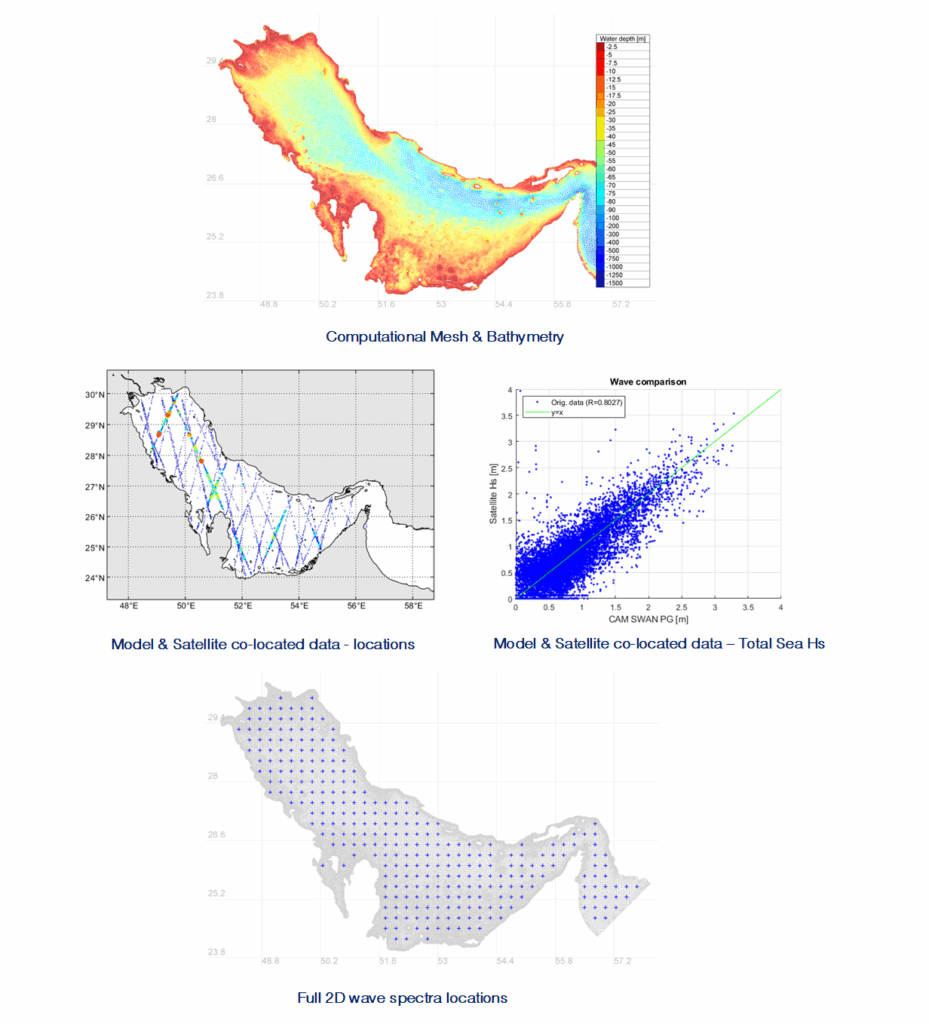Description
The Persian Gulf is a very enclosed basin where global and regional models do not have enough spatial resolution to reproduce the wave climate accurately. Therefore a regional wave hindcast was developed, using SWAN (Simulating Wave Nearshore) numerical model version 41.31.
Key features
- An unstructured mesh, with a spatial resolution varying, as a function of depth and distance to the coast, from 0.05 to 0.025° was used to run the model
- Bathymetric data from the General Bathymetric Chart of the Oceans (GEBCO) was interpolated at each node of the unstructured mesh to produce the bathymetry
- Hourly wind fields covering the whole area of interest were obtained from the ERA5, the fifth generation ECMWF atmospheric reanalysis of the global climate, from 1st January 1994 to 31st December 2024
- Satellite measurements from GlobWave Project and from the NOAA Jason-2 and Jason-3, from 2008 to 2020 were used to calibrate the wind hindcast
- Hourly Full 2D wave spectrum data was obtained from the ERA5 at three locations along the model’s open boundary in the Gulf of Aden and used to input the offshore wave energy into the model
- The SWAN model was forced with the wind maps and the full 2D wave spectra, and run at MSL in non-stationary mode
- Model outputs were validated against satellite measurements from GlobWave Project and from the NOAA Jason-2 and Jason-3
- Hourly time series of total sea integrated parameters: significant wave height (Hs), mean wave direction (MWD), spectral peak wave period (Tp) and zero-crossing wave period (Tm02/Tz) were stored at each node of the computational mesh. Additionally, the dynamically downscaled full 2D wave spectra was stored at about 300 points across the domain.



